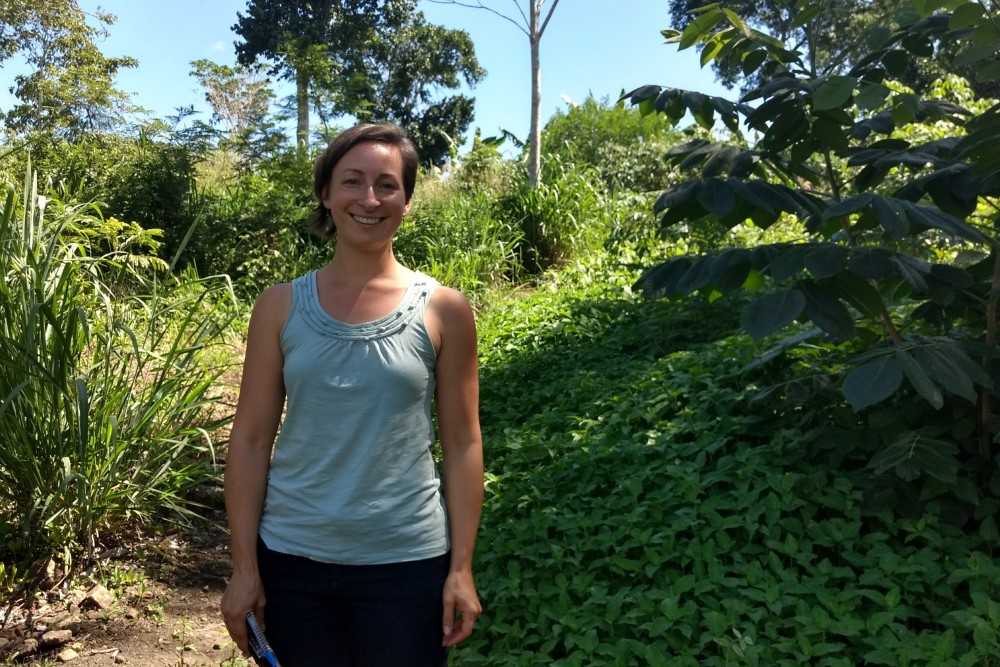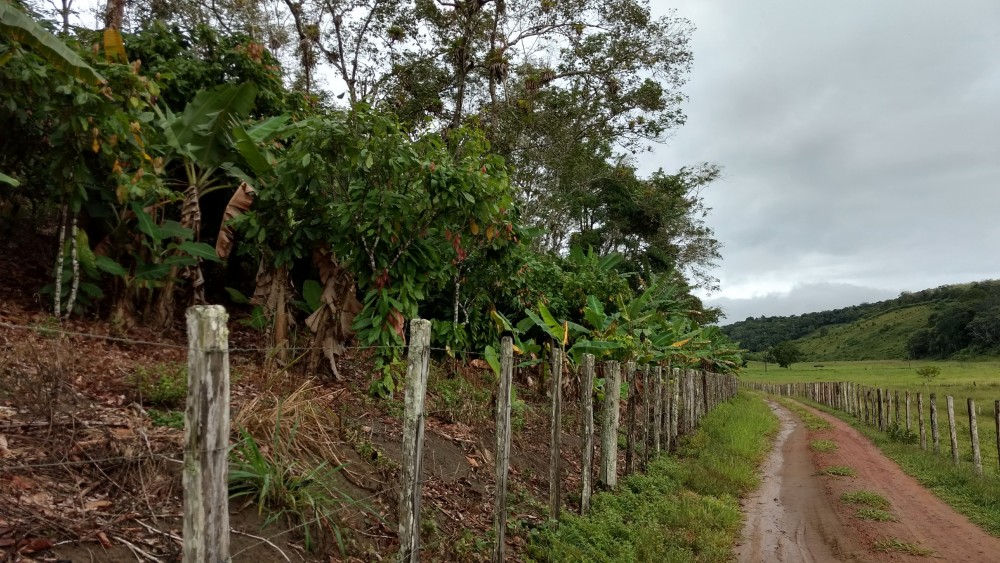Many of the largest patches of remaining forest are in the state of Bahia, in northern Brazil. There, sociologist Leah VanWey and ecologist Stephen Porder are spearheading a project that attempts to foster reforestation efforts by making payments to local residents.

Postdoctoral research associate and human-environment geographer Kira Sullivan-Wiley, who is supported by a partnership between IBES and the Nature Conservancy, is conducting complementary surveys in the region.
"My work looks at reforestation decisions and land management behavior in that region by farmers who aren't necessarily part of the payment project," she says. "I look at latent interest in reforestation, or the way people perceive forests and engage with forests—not when they're part of an intervention, but just day-to-day because they're farmers."
As Sullivan-Wiley explains, reforestation has multiple benefits to land managers, even beyond the financial incentives that VanWey and Porder's project promises. Indeed, planting more trees improves water quality on the land, and can also help to bring owners into compliance with the government's forest code.
Moreover, it provides a way for farmers to generate a sort of social benefit.
"People generally want to do things that are good, but they don't want to be taken advantage of," she says. "And so one of the interesting things about a payment project is we can nudge them in that direction—so they get the emotional benefit of doing something good, but without the initial cost to themselves."

In contrast, Sullivan-Wiley makes it a point to talk to them more conversationally about their views on forests and the state of the environment. She has found that this makes a difference in their responses.
"We found some interesting results about the emphasis that people put on the importance of cultural and social issues, as opposed to financial, economic issues, depending on the context in which you're discussing reforestation," she says. "When people hear that there's going to be an intervention, I think they have an expectation that it's going to be technical, it's going to be economic... whereas that's not all you can do with an intervention."
As Sullivan-Wiley explains, in more relaxed conversations, land managers tend to talk more openly about generational differences, environmental changes they have witnessed firsthand, or the social and cultural norms that appear to get in the way of reforestation efforts.
"When you are just having a discussion about how to move forward and achieve reforestation, they talk about a much wider array of things that you can do and ways to move forward," she explains. "I find that promising, because I think it means that we can change a lot more about how we design interventions to achieve better results. There's this whole realm of potential interventions that deal with social and cultural change that aren't being tapped into, and I think have a huge amount of potential."
Sullivan-Wiley interviews farmers and land managers for a living: that is, people who make decisions about their land every minute of every day. But even still, her questions sometimes catch them off-guard.
She describes one interaction in which she asked a land manager a series of questions about nature: Are trees part of nature? Is air part of nature? Are houses part of nature?
She arrived at the question, "Are people part of nature?" And her interviewee, who had previously been so certain, faltered.
"He took a solid minute and a half to answer," she remembers. "You could see him really trying to engage with the subject that we were asking about. And I love those moments as an interviewer, because people are reflecting. They're really trying to figure out, what is it that I believe?"
For Sullivan-Wiley, illuminating the rationale behind peoples' land management decisions is key.
"Biogeochemistry, the carbon cycle, the water cycle—all these global phenomena are really driven by how people are managing land," she says. "And so understanding how and why they're managing land affects everything, everywhere."
But she is also driven by the sincere belief that negative relationships between people and their environments can, and should, be repaired—for the benefit of both parties.
"They're both motivations. Depending on the day, I find one or the other more compelling," she laughs. "But I think it's important that we look forward to a time when the relationship that people have with the environments they live in is a better one, and I see the work that I do as part of that long-term goal."